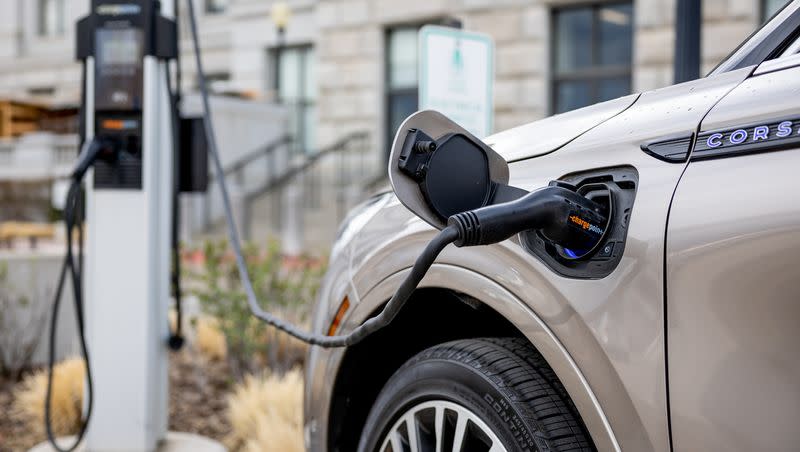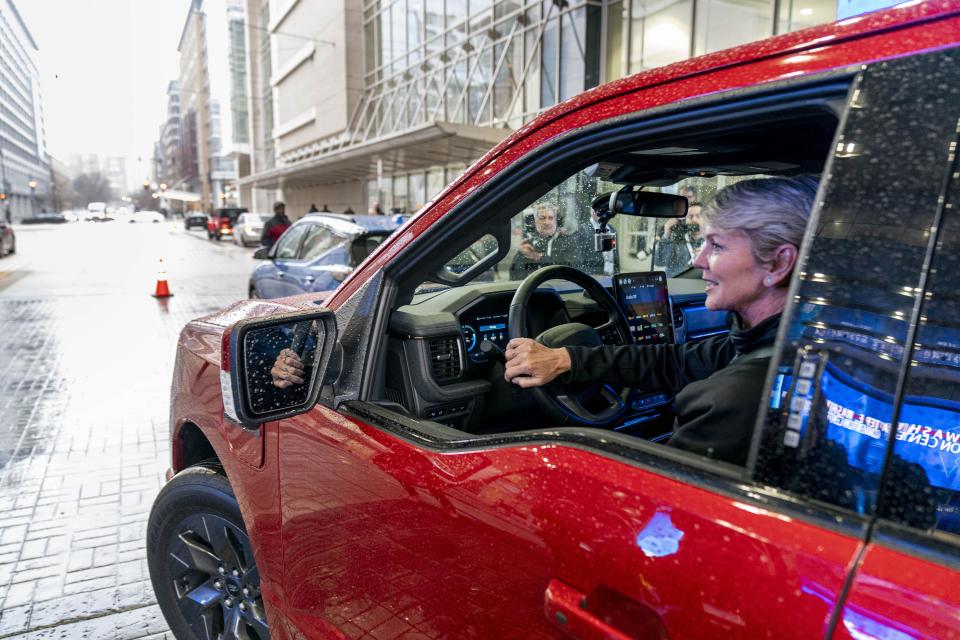Are electric vehicles road-trip friendly? Not exactly

- Oops!Something went wrong.Please try again later.
Electric vehicles can be ideal for city driving when you plug your car in to charge before bedtime. But what if it isn’t just a daily commute or a weekly errand but a full-blown road trip?
As a recent four-day road trip by Secretary of Energy Jennifer Granholm showed, the nation has a lack of charging stations, which forces travelers to plan extensively. Urban areas are typically well-equipped, but problems emerge when travelers venture into the more rural parts of the country.
Granholm ran into infrastructure-related challenges during her trip from Charlotte, North Carolina, to Memphis, Tennessee, in late July. The point of the short tour was to promote the Biden administration’s climate policies, clean energy investments and new jobs.
Charging infrastructure varies from state to state. California has nearly 15,000 public chargers and close to 1,800 fast chargers. According to Utah Clean Energy, the state of Utah has hundreds of charging stations, which include roughly 240 fast charging stations that can charge a car in 30 minutes. Meanwhile, states like Louisiana, Mississippi and Alabama are barely electrified.

How is charging infrastructure for EVs a problem?
Riding in a Cadillac Lyric electric SUV, Granholm went from city to city, promoting the Biden administration’s climate policies and clean energy investments, which are generating jobs. Her entourage rode in a Ford F-150 and a Bolt electric utility vehicle.
Things went terribly wrong during a stop at Grovetown, a suburb of Augusta, Georgia, according to NPR’s Camila Domonoske, who accompanied Granholm.
During a particularly hot day, staffers from the energy agency, who were driving ahead in gas-powered cars, realized that the number of chargers at the station wouldn’t be enough for the three EVs — one out of the four was broken and the others were being used.
So, someone from Granholm’s team parked their car in front of a charger to reserve a spot for the secretary of energy, holding up a whole line. This move also blocked a family that had a baby in the car. This family ultimately got upset and called the police.
The sheriff didn’t do anything, since blocking a charging spot with a non-electric vehicle wasn’t illegal. But the situation wasn’t exactly a PR success story for Granholm, who was trying to promote EVs.
“If the Biden administration can’t make it from Charlotte to Memphis without an incident, how do they expect to transition our military’s nontactical fleet to electric by 2030?” Sen. Joni Ernst, R-Iowa, said during the GOP leadership press conference Tuesday.
She was referring to targets the administration has set for transitioning to clean energy, like achieving a net zero emissions economy by 2050 and increasing the percentage of electric vehicles sold to 50% by 2030.
U.S. vehicle owners aren’t entirely convinced either. Half of Americans said they weren’t interested in buying electric vehicles, according to a recent Pew Research Center survey.
Plus, “EVs that aren’t Teslas have a road trip problem, and the White House knows it’s urgent to solve this issue,” as Domonoske wrote.
The Energy Department in a statement to Fox News said the Biden administration is investing $7 billion, a portion of which has been awarded to every state, into EV infrastructure that is more reliable.
“The private sector is following suit with equally ambitious investments — growing our workforce and keeping money in the pockets of hardworking Americans,” the statement added.
Tesla strikes deal with federal government, other automakers over chargers
Elon Musk’s Tesla dominates the EV market and its superchargers also rank better than the public fast chargers, according to a J.D. Power report. But these chargers can only be used by Tesla vehicles.
Since Tesla has a wide network of highly efficient charges, totaling more than 160,000 across the U.S., it made sense to make these chargers available to other cars, too.
The White House announced in February this year that Tesla will open a portion of its chargers to the public.
A few months later, Tesla agreed to share its charging network with Ford, opening the gates for other automakers. Now GM Motors, Honda, Mercedes-Benz, Nissan, Polestar and Rivian have deals with Tesla, while others like Hyundai are in the talks.
So, it’s safe to say that a road trip will look much different in an EV in the coming months and years.
Granholm told NPR she thinks that by the end of the year, the chargers will begin “popping up along the charging corridors” as billions of government dollars enter the economy.

